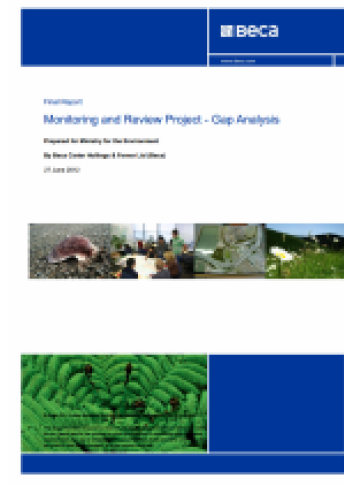The Gap Analysis was one of four studies undertaken as part of the RMA Monitoring and Review Project. The gap analysis distilled key points from the three scoping studies (Needs Analysis, Stocktake, and Case Studies) to identify gaps and opportunities for designing and developing an integrated national monitoring framework for the RMA.
The Gap Analysis was one of four studies undertaken as part of the RMA Monitoring and Review Project. The gap analysis distilled key points from the three scoping studies (Needs Analysis, Stocktake, and Case Studies) to identify gaps and opportunities for designing and developing an integrated national monitoring framework for the RMA.
The report presented two forms of gap analysis. The first looked at strengths, weaknesses, opportunities and threats (SWOT). Summaries of points include:
Strengths – the innovation and development of systems and processes for monitoring by councils, and development of monitoring across areas through national collaboration.
Weaknesses – the diversity and variability of monitoring systems and processes which have usually been developed for individual needs in the absence of a wider plan or connection.
Opportunities – greater central direction across monitoring processes and using existing systems and processes for connecting and sharing information. Looking at connections to other processes that align locally and nationally.
Threats – increasing needs for monitoring information, the degree of detail required, mandate and support for monitoring, and the costs involved.
The second form of analysis identified critical success factors for a national framework and the gap between the current and potential future state. The critical success factors identified are:
- planned framework
- aligned to outcomes
- defined indicators
- clear scope
- infrastructure to support
- clear accountability
- capacity to implement
- meaningful information
- interoperability
- resourcing.
The report also identifies potential areas for further background research and highlights some key areas for further work including a fuller inventory of council’s and other department’s data and monitoring initiatives. It reiterates that the intervention logic model is a good approach for informing the development of outcomes-based monitoring frameworks as this model identifies the inputs, outputs and short, intermediate and longer-term outcomes anticipated from national planning processes.
Find out more on the Developing a national monitoring system for the RMA web page.
